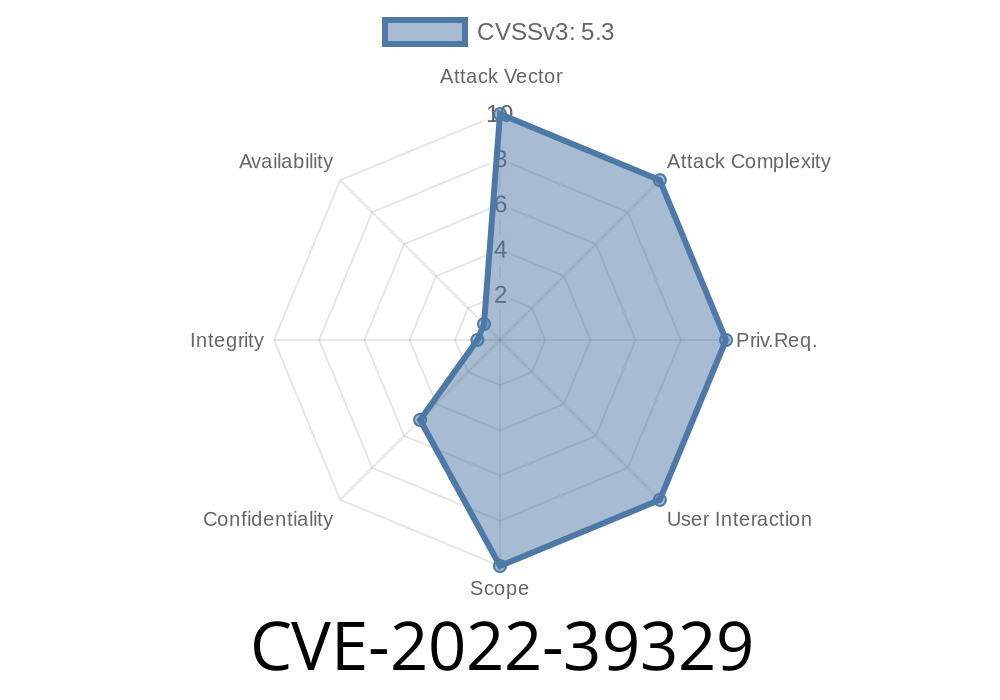A vulnerability (CVE-2022-39329) in Nextcloud Server and Nextcloud Enterprise Server prior to versions 23..9 and 24..5 could potentially allow unauthorized access to sensitive user information. Administrators are urged to update to the latest version that contains the patch. No workarounds are currently available.
Body
Nextcloud Server is a popular file server solution for the self-hosted productivity suite, Nextcloud. A vulnerability, tracked as CVE-2022-39329, has been discovered in Nextcloud Server and Nextcloud Enterprise Server, affecting versions prior to 23..9 and 24..5. This vulnerability can lead to the exposure of user data that cannot be controlled without direct access to the database.
The vulnerability has been fixed in the latest update, and administrators should update their Nextcloud Server installations to versions 23..9 or 24..5 to mitigate the risk. At this time, no known workarounds are available for those affected by the vulnerability.
The issue resides in the way the server handles certain queries, allowing unauthorized access to user information. Here's a code snippet illustrating the problem:
function fetchData ($userID){
$userData = query(“SELECT * FROM users WHERE userID = ‘” . $userID . “’ LIMIT 1”);
return $userData;
}
This snippet shows how the server can fetch user data without any checks for proper access rights or validation. As a result, an attacker could potentially abuse this functionality to gain unauthorized access to sensitive user data.
To understand how the security fix patches this issue, refer to the official Nextcloud Server repository and changelogs:
- Nextcloud Server Repository
- Changelog for Nextcloud Server 23..9
- Changelog for Nextcloud Server 24..5
Administrators should promptly update their installations to the latest version as no workarounds are currently known for this vulnerability. The exploit details have not been released to the public, to prevent further harm until most installations are updated.
In conclusion, CVE-2022-39329 is a serious vulnerability that affects Nextcloud Server and Nextcloud Enterprise Server prior to versions 23..9 and 24..5. The vulnerability could potentially allow unauthorized access to sensitive user data, making its prompt patching crucial. Administrators should update their Nextcloud Server installations without any delay to ensure continued data security and integrity.
Timeline
Published on: 10/27/2022 14:15:00 UTC
Last modified on: 10/31/2022 17:37:00 UTC
